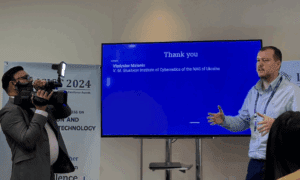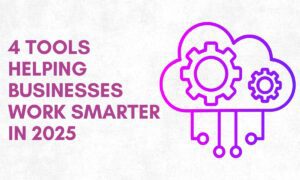It’s a story we’ve heard a thousand times. A massive company, a trusted institution, announces a data breach affecting millions. The cause? A tiny, overlooked vulnerability in their software—a digital crack in the armor that hackers found and exploited. For decades, the digital world has been locked in a frantic, high-stakes game of whack-a-mole. Developers write code, hackers find flaws, and developers scramble to patch them. This reactive cycle has been the status quo, an accepted cost of doing business in the internet age.
But what if the code could heal itself?
What if a silent, intelligent coder was working 24/7 in the background, not just flagging vulnerabilities, but understanding, rewriting, and deploying fixes before a human ever knew there was a problem? This isn’t science fiction. This is the new frontier of cybersecurity, and it’s arriving faster than anyone anticipated. We are witnessing the birth of self-healing software, and the implications will change everything about how we build and trust our digital world.
The Endless Treadmill of Manual Patching
To appreciate the magnitude of this shift, one must first understand the Sisyphean task that security and development teams face every single day. The process of vulnerability management has traditionally been a grueling, manual affair.
- Discovery: A flaw is discovered, either by an internal “red team,” an ethical hacker, or worse, a malicious actor.
- Triage: Security analysts must then assess the severity of the vulnerability. Is it a critical flaw that could bring down the entire system, or a minor issue with limited impact? This requires deep expertise and careful judgment.
- Assignment: The ticket is passed to the appropriate development team, which might already be overwhelmed with building new features.
- Remediation: A developer must now dive into what could be millions of lines of complex, often poorly documented code, identify the root cause, write a patch, and test it extensively to ensure the fix doesn’t inadvertently break something else.
- Deployment: Finally, the patch is rolled out across all systems, a process that can be complex and fraught with its own risks.
This entire cycle can take weeks, or even months. All the while, the vulnerability remains open—a ticking time bomb. According to a 2024 industry report, the average time to fix a critical cybersecurity vulnerability is now over 60 days. In the world of cybercrime, that’s an eternity. This is the broken system that AI is poised to fix.
The Dawn of the AI Security Analyst
Artificial intelligence has been quietly integrating itself into cybersecurity for years, primarily in the realm of threat detection. Sophisticated algorithms now monitor network traffic for anomalous behavior, identify malware signatures, and block phishing attempts with superhuman speed and accuracy. These tools act as a powerful digital immune system, identifying and neutralizing threats as they appear.
But detection is only half the battle. Finding the problem is not the same as fixing it.
The revolutionary leap we are seeing now is AI’s transition from a passive observer to an active participant. Instead of just flagging a problem, new AI systems can now perform root cause analysis and actively engage in code remediation. They are learning to write the solution.
Case Study: Google’s CodeMender and the New Security Paradigm
No recent development exemplifies this shift more clearly than Google’s introduction of CodeMender. This isn’t just another scanning tool; it’s an AI agent designed to function as an autonomous security engineer.
Powered by large language models (LLMs) fine-tuned on vast repositories of security data, CodeMender can understand the intricate logic of software. When a vulnerability is flagged, it doesn’t just see a line of bad code; it understands the context of the flaw. It then generates a secure, functional patch and, in many cases, can validate it to ensure it resolves the issue without causing unintended side effects.
This move by Google is part of a much larger, holistic strategy to embed AI into the very fabric of software development. As reported in a detailed analysis by TechsWire, this initiative is coupled with an expansion of Google’s AI Vulnerability Reward Program. The company is actively encouraging researchers to test these AI-driven systems, creating a feedback loop to make the models smarter and more robust. This signifies a fundamental belief that AI isn’t just a feature, but the future foundation of a more secure development lifecycle.
Beyond Google: An Industry-Wide Transformation
While Google’s announcement has made headlines, it’s a reflection of a broader industry trend. Tech giants and startups alike are racing to build the next generation of AI-powered security tools.
- GitHub Copilot, for instance, has already changed how developers write code by offering intelligent suggestions. Its security-focused features can now flag insecure coding patterns in real-time, preventing vulnerabilities from ever being written in the first place.
- Startups are emerging with a singular focus on AI-driven remediation, offering services that integrate directly into a company’s development pipeline to provide continuous, automated security fixes.
- The open-source community is also experimenting with smaller, specialized models designed to find and fix specific types of bugs in popular programming languages.
This collective movement is creating a new ecosystem where security is no longer an afterthought or a separate stage in development, but a continuous, automated, and intelligent process woven throughout.
The Double-Edged Sword: Risks and Ethical Considerations
The promise of self-healing code is immense, but it is not without its perils. Entrusting our digital infrastructure to autonomous AI agents raises critical questions that the industry is only just beginning to grapple with.
What if the AI’s “fix” introduces a new, more subtle vulnerability? An AI model optimized for security might rewrite a piece of code in a way that is secure but breaks a critical business function or dramatically slows down performance. Rigorous, automated testing will be more crucial than ever.
Could malicious actors use this same technology against us? If an AI can be trained to find and fix flaws, another AI can certainly be trained to find and exploit them at a scale and speed that human hackers could only dream of. The future of cyber warfare may be fought not between humans, but between competing AI systems.
The “Black Box” Problem: Many advanced AI models are notoriously opaque. We know they work, but we don’t always know how they arrived at a particular solution. A developer might accept an AI-generated patch without fully understanding its logic, potentially creating long-term maintenance and complexity issues.
The Future for Developers and End-Users
The rise of the AI coder doesn’t mean the end of the human developer. Instead, it signals an evolution of their role. Developers will likely transition from writing boilerplate code and chasing down routine bugs to becoming architects and overseers of complex AI-driven systems. Their focus will shift to creative problem-solving, system design, and training the AI models to align with specific business goals—tasks that still require human ingenuity and critical thinking.
For the average person, the benefits will be more direct, albeit less visible. It means the apps on your phone, the websites you use for banking, and the software that runs your car will become inherently more secure. Updates and patches will be deployed faster, and the window of opportunity for hackers to exploit new vulnerabilities will shrink from months to mere hours, or even minutes.
The era of reactive cybersecurity is coming to an end. We are stepping into a proactive, predictive, and autonomous age. The silent coder has arrived, and it’s working tirelessly to build a safer digital future for all of us.

































